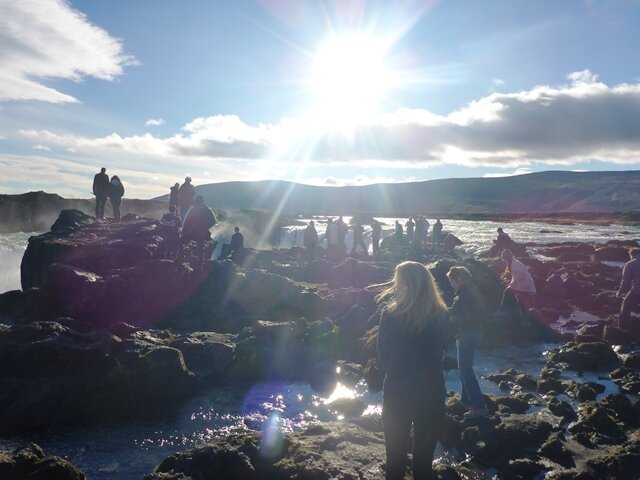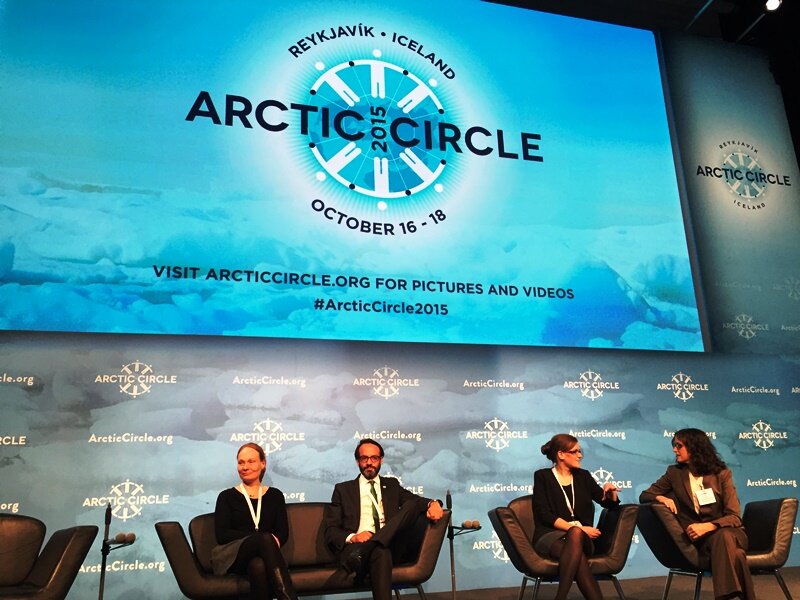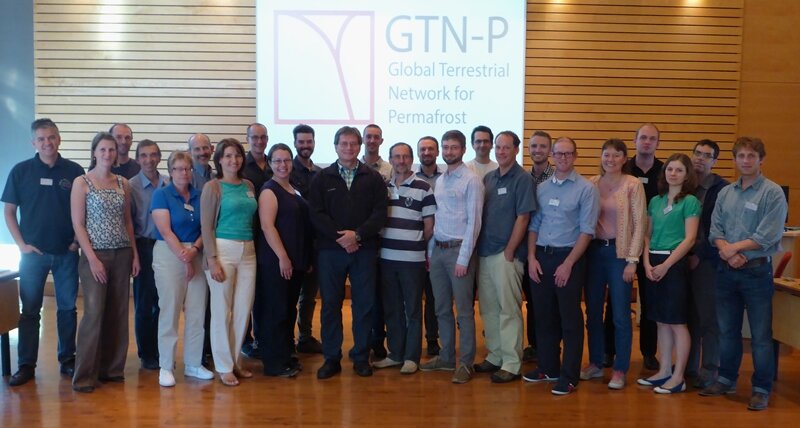Samoylov 2014: The measurements
One of my tasks is to find my subsidence stations and to read them out. We installed them in April 2013 on Kurungnakh Island, in order to investigate the rate of the seasonal subsidence due to the thawing of the active layer in summer.
Most part of this island is occupied by the Ice Complex, containing enormous amount of ground ice.
I have 12 stations for the manual subsidence measurements – simple metal tubes, deeply inserted to the permafrost.
A plexiglas plate with a hole in the middle sets on the ground surface with the pipe passing through the hole.
 (Photo:J.Boike) Subsidence station for the manual measurement.The plate moves along the pipe together with the ground. I have to measure the distance between the plate and the end of the pipe few times per season – the difference in my measurements gives me the vertical surface movement.
(Photo:J.Boike) Subsidence station for the manual measurement.The plate moves along the pipe together with the ground. I have to measure the distance between the plate and the end of the pipe few times per season – the difference in my measurements gives me the vertical surface movement.
Of course, the method has some disadvantages, for instance, the surface can be disturbed in the measuring point, but it is rather simple and doesn't require any support.
Last summer I got a consistent picture – all of them showed subsidence, on the scale of 2-3 cm, although different rates, most likely depending on the soil moisture at the location.
Besides 12 manual stations I have three automatic ones, where data loggers store the data every hour.
 (Photo: S. Antonova) Cater “Ural” - our transport to the work.The distance to the ground is measured by ultrasonic sensor, installed on the metal pole which is inserted also very deep to permafrost in a way to avoid the moving of the pole.
(Photo: S. Antonova) Cater “Ural” - our transport to the work.The distance to the ground is measured by ultrasonic sensor, installed on the metal pole which is inserted also very deep to permafrost in a way to avoid the moving of the pole.
These measurement are much better in terms of time resolution, but stations required some support, like changing the batteries and solving the problems with electronics. Moreover, wires can be bitten by animals.
So, this year is already the second season for my measurements and I'm really interested in the results of this year for the comparison.
 (Photo: N. Bornemann) A reindeerFirst trip to Kurungnakh. To get from the Samoylov Research Station, where we all happily live at the moment, to Kurungnakh, we need a boat. The chief of the Station – Fedor, brings us there every day with comfortable motor boat, and comes in the evening to pick us up.
(Photo: N. Bornemann) A reindeerFirst trip to Kurungnakh. To get from the Samoylov Research Station, where we all happily live at the moment, to Kurungnakh, we need a boat. The chief of the Station – Fedor, brings us there every day with comfortable motor boat, and comes in the evening to pick us up.
On that first day, Julia and me checked two automatic and 4 manual stations in the southern part of Kurungnakh. We made all in all 10 km by foot, what is not so easy in wet tundra with rubber boots. However, I have to say, that walking with a companion is much more pleasant, than walking alone, like I did last year. Moreover, I got the valuable comments from Julia about my sites, because she is very experienced in periglacial environment.
On the way back we saw a reindeer. He was running so graciously in front of us for quite a long time!
Written by Sonya












